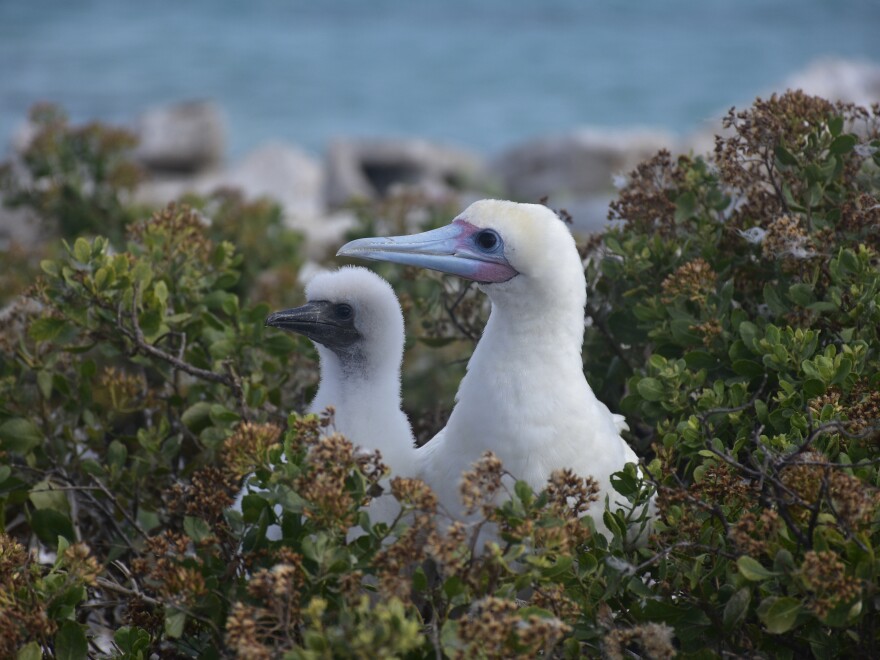After more than a decade, the terrorizing reign of the yellow crazy ant is over on the Johnston Atoll National Wildlife Refuge, part of the Pacific Remote Islands Marine National Monument.
The nonnative invasive insect had been threatening ground-nesting seabirds on the atoll since at least 2010, nearly wiping out the island's red-tailed tropicbird colony in just a few years and wreaking havoc on other seabirds. But the U.S. Fish and Wildlife Service announced Wednesday that its campaign to eradicate the insects has been a success.
"This has been such a Herculean effort by so many dedicated volunteers and staff for so many years," Kate Toniolo, superintendent for the Pacific Remote Islands Marine National Monument, told NPR.
She added: "It's so huge and we're so excited to be able to say that the yellow crazy ant, which has been so detrimental to our seabird population, is just gone."

The yellow crazy ants are dangerous to seabirds
To understand why the yellow crazy ants are so harmful to red-tailed tropicbirds in particular, it's important to understand how the feathered creatures evolved.
"Unlike other birds, they nest on the ground and not in trees," Toniolo explained. "That's because they have never had any predators or pests on the ground that bother them."
Until the arrival of the nonnative insect.
Yellow crazy ants, which earned their name for their fast and erratic behavior, would swarm the birds and their ground nests spraying formic acid into the animals' eyes and beaks.
"In many cases it blinded the birds. In chicks, [the acid] would cause beak malformations making it impossible for them to eat ... so they would just starve to death," Toniolo said.

It is unclear what provokes the ants to spray their acid, Toniolo said, adding that that aspect of their behavior has not been studied.
"However, the ants are opportunistic and at high densities will explore everything in their surroundings, including the ground-nesting birds. They likely spray the acid in response to the birds trying to shake them off."
Crazy Ant Strike Teams took on the job
The yellow crazy ant was last spotted by Crazy Ant Strike Teams on the vital seabird nesting grounds in December 2017, but it was too soon to tell if the ants had been fully extinguished because their colonies are found underground, Toniolo said.
Scientists used multiple strategies to eradicate the pests, including finding the perfect bait concoction that the ants would eat and take back to their colonies, according to Toniolo.
"But it took some time to find the right mixture. For some reason, the yellow crazy ants here on Johnston were different in their taste preferences from the ants in Oahu, " she said, adding that they can also be found on all of Hawaii's islands.
The years-long search also included two dogs — Guinness and Solo — that were trained to sniff out underground colonies.

It's a mystery how ants got to the uninhabited island in the first place
Toniolo said scientists don't really know how the pernicious ants got to Johnston Atoll.
It's not an easy place to reach for animals. It's the only seabird habitat in over 570,000 square miles of open ocean. And the U.S. Fish and Wildlife Service has very stringent biosecurity protocols for travel to the Pacific Remote Islands Marine National Monument to ensure no unwanted critters do find their way out there, she noted.
"If you go to Johnston, all of your clothes have to be brand new, off the shelf, never worn, and frozen for 48 hours before you can be brought to the island," she explained.
Copyright 2021 NPR. To see more, visit https://www.npr.org.








